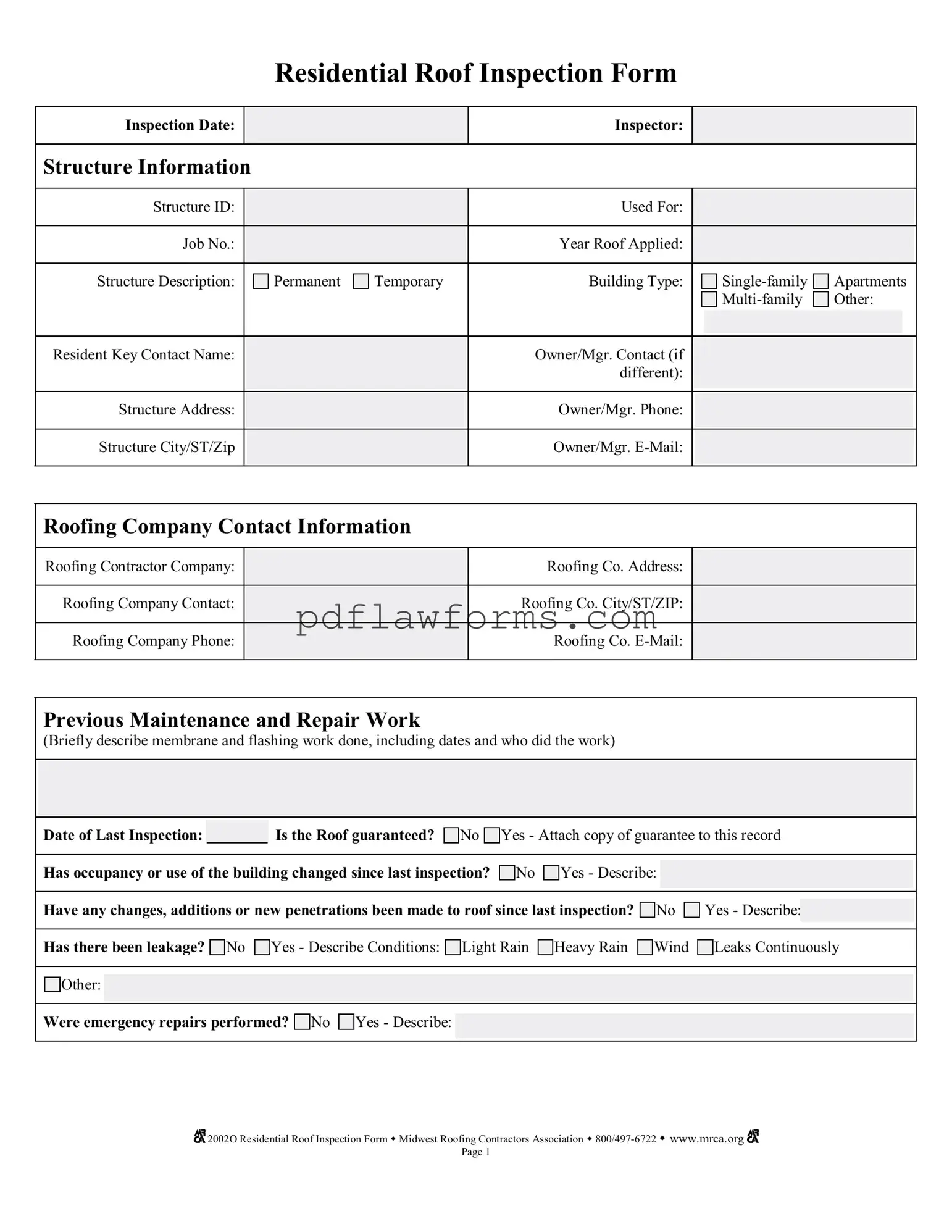Filling out a Roof Inspection form may seem straightforward, but many individuals make common mistakes that can lead to confusion or incomplete records. One prevalent error is neglecting to provide accurate contact information for the roofing company. This includes the company name, address, and phone number. If the inspector or property owner needs to reach out for follow-up questions or clarifications, having incorrect or missing information can cause unnecessary delays.
Another mistake often made is failing to describe previous maintenance and repair work adequately. The section asking for details about membrane and flashing work is crucial for understanding the roof's history. Omitting this information can hinder future inspections and repairs, as it leaves out essential context regarding the roof's condition and the effectiveness of past interventions.
Many people overlook the importance of noting changes in occupancy or use of the building since the last inspection. This detail can significantly affect the roof's performance and wear. For instance, if a building has transitioned from residential to commercial use, the load and stress on the roof may have changed, necessitating a different approach to maintenance and inspection.
Additionally, failing to indicate whether there has been leakage is a critical oversight. If leaks have occurred, it is essential to describe the conditions under which they happened, such as during light rain or heavy wind. This information helps inspectors identify potential weaknesses in the roof and prioritize repairs effectively.
Emergency repairs should also be documented carefully. If any emergency work was performed, the inspector needs to know the specifics. Skipping this detail can lead to misunderstandings about the roof's current state and any potential vulnerabilities that may need immediate attention.
Another common error involves the condition coding section. Inspectors might hastily mark the conditions of various roof components without careful consideration. Each item should be evaluated thoroughly and coded accurately as Good, Fair, or Poor. Inaccurate coding can mislead future inspections and maintenance efforts.
Lastly, many individuals forget to attach supporting documents, such as guarantees or previous inspection records. These attachments provide valuable context and assurance about the roof's condition and any warranties that might still be in effect. Not including these documents can complicate future claims or repairs.
